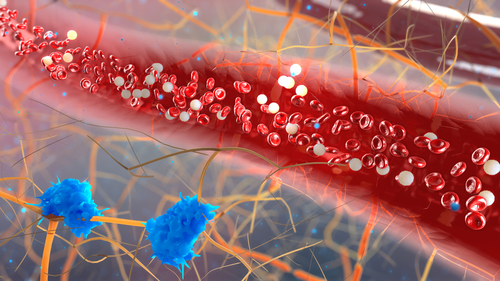Woman with Double-Positive Disease Treated with Plasma Exchange Combo, Case Study Shows
Written by |

A woman in Japan diagnosed with both ANCA-associated vasculitis and anti-glomerular basement membrane (GBM) disease — an extremely rare medical condition known as double-positive disease — was successfully treated with plasma exchange and cyclophosphamide, according to a case report.
The case study, “Successful treatment of steroid-refractory double-positive ANCA and anti-GBM disease with a combination of plasma exchange and immunosuppression: A case report and literature review,” was published in Respiratory Medicine Case Reports. Its authors believe it is the first such report made.
ANCA-associated vasculitis (AAV) and anti-GBM disease are two rare autoimmune diseases that cause blood vessel damage and bleeding. The simultaneous occurrence of both disorders in the same patient (double-positive disease) is exceedingly rare. Studies, however, indicate that about 10% of all AAV patients produce antibodies linked to anti-GBM disease.
Double-positive disease patients have a grim prognosis compared to those with either AAV or anti-GBM disease alone, suggesting that both disorders work together to drive disease initiation and progression. No optimal therapeutic approach currently exists for patients with double-positive disease.
In this report, researchers described the clinical case of a 78-year old Japanese woman with steroid-refractory (disease not responding to standard steroid therapy) double-positive disease, who was successfully treated with the immunosuppressant cyclophosphamide and plasma exchange (PE) — a procedure that removes a patient’s plasma and brings to it other blood components plus a special replacement fluid.
The patient visited her primary care physician after coughing up blood for three months. Her chest X-ray revealed shadows in both lungs, and she was initially prescribed a course of antibiotics — oral azithromycin and intravenous meropenem — for seven days. The treatment failed to clear her lungs, and she ended up with acute respiratory failure.
She was then diagnosed with diffuse alveolar hemorrhage (DAH) and rapidly progressing glomerulonephritis (kidney inflammation), and received two cycles of pulse methylprednisolone (corticosteroid) therapy. However, her respiratory and kidney conditions continued to deteriorate, and she was admitted to the hospital.
Subsequent blood tests revealed the woman was positive for both myeloperoxidase (MPO)-ANCA and anti-GBM antibodies. Given her previous respiratory and kidney problems, she was diagnosed with double-positive disease.
She was treated with a combination of cyclophosphamide — first administered through an intravenous injection, and then orally — and plasma exchange. The levels of MPO-ANCA and anti-GBM antibodies dropped significantly post-treatment and, after spending 79 days in the hospital, she was discharged, and given outpatient rehabilitation therapy.
“The marked contrast in therapeutic response to corticosteroids alone and the addition of PE and [cyclophosphamide] in this case strongly implies that earlier induction of combination therapy aimed at rapid removal of pathogenic autoantibodies and prevention of ongoing antibody production might improve the outcome of this life-threatening disease,” investigators wrote.
“Patients with either AAV or anti-GBM disease should be tested for second antibody to screen for double-positive disease. Since double-positive disease might be a truly hybrid disease … early intensive combination immunosuppression and PE therapy, and careful long-term follow-up and maintenance immunosuppression are vital for achieving an excellent outcome,” they added.





